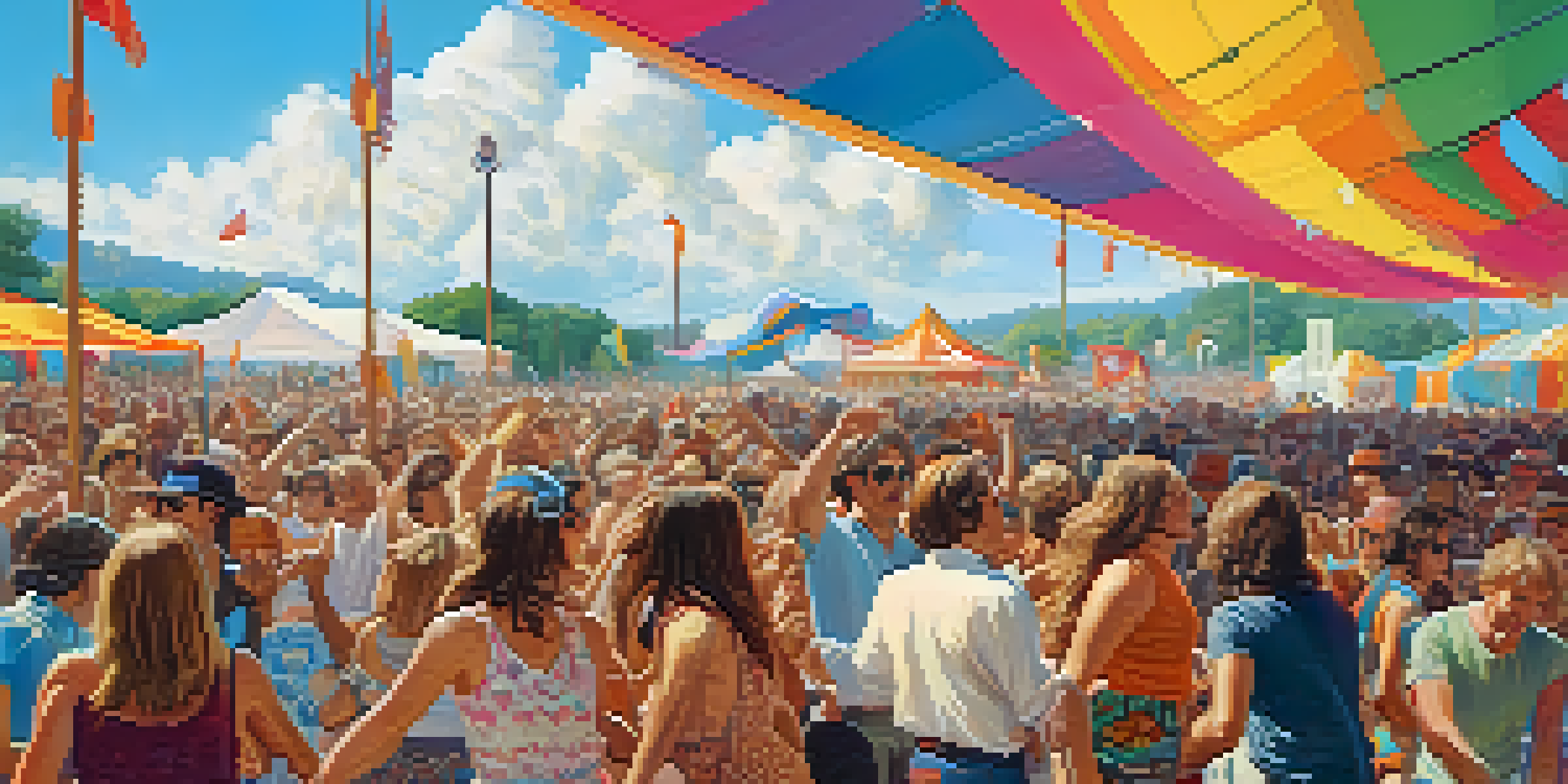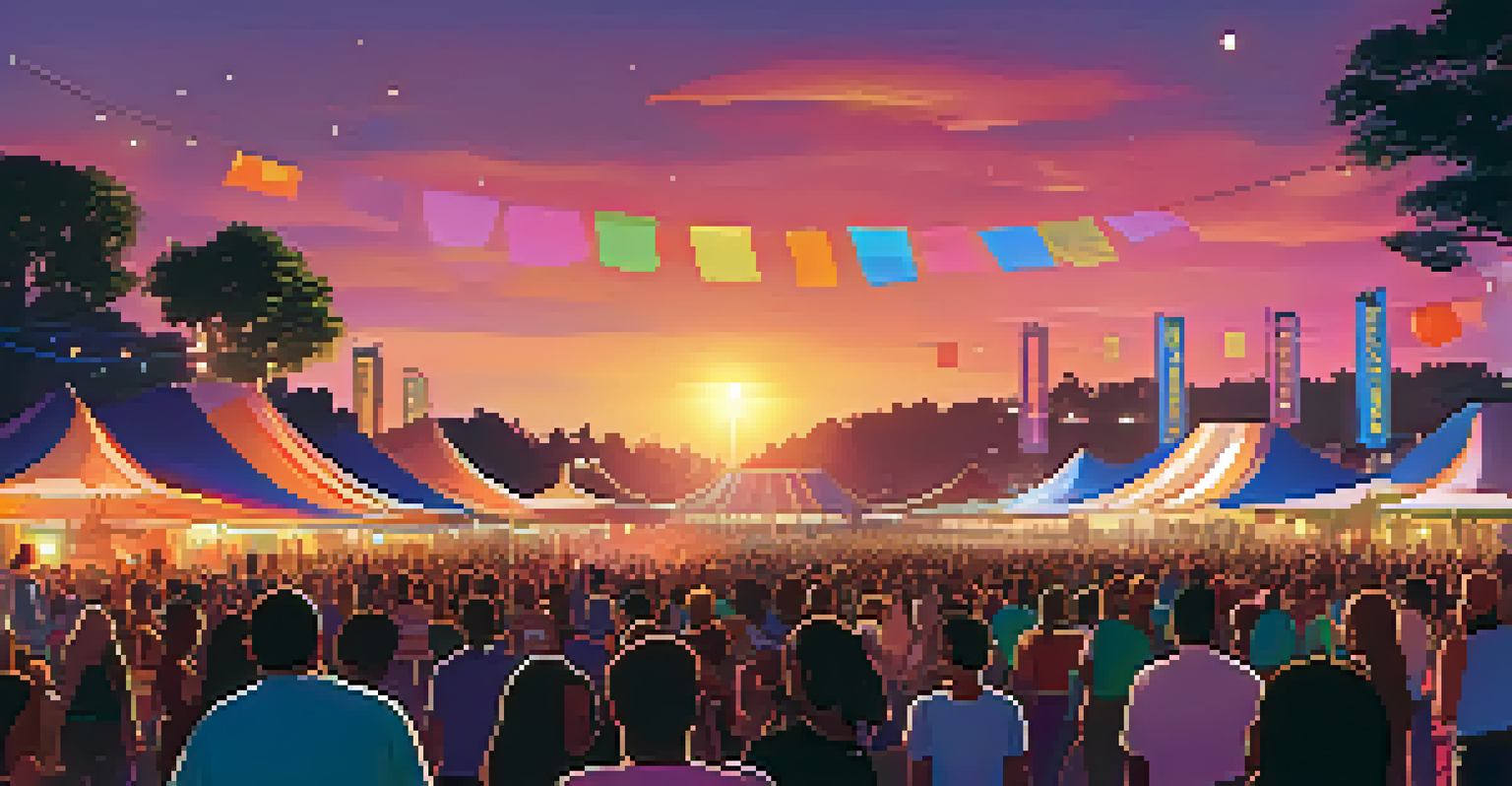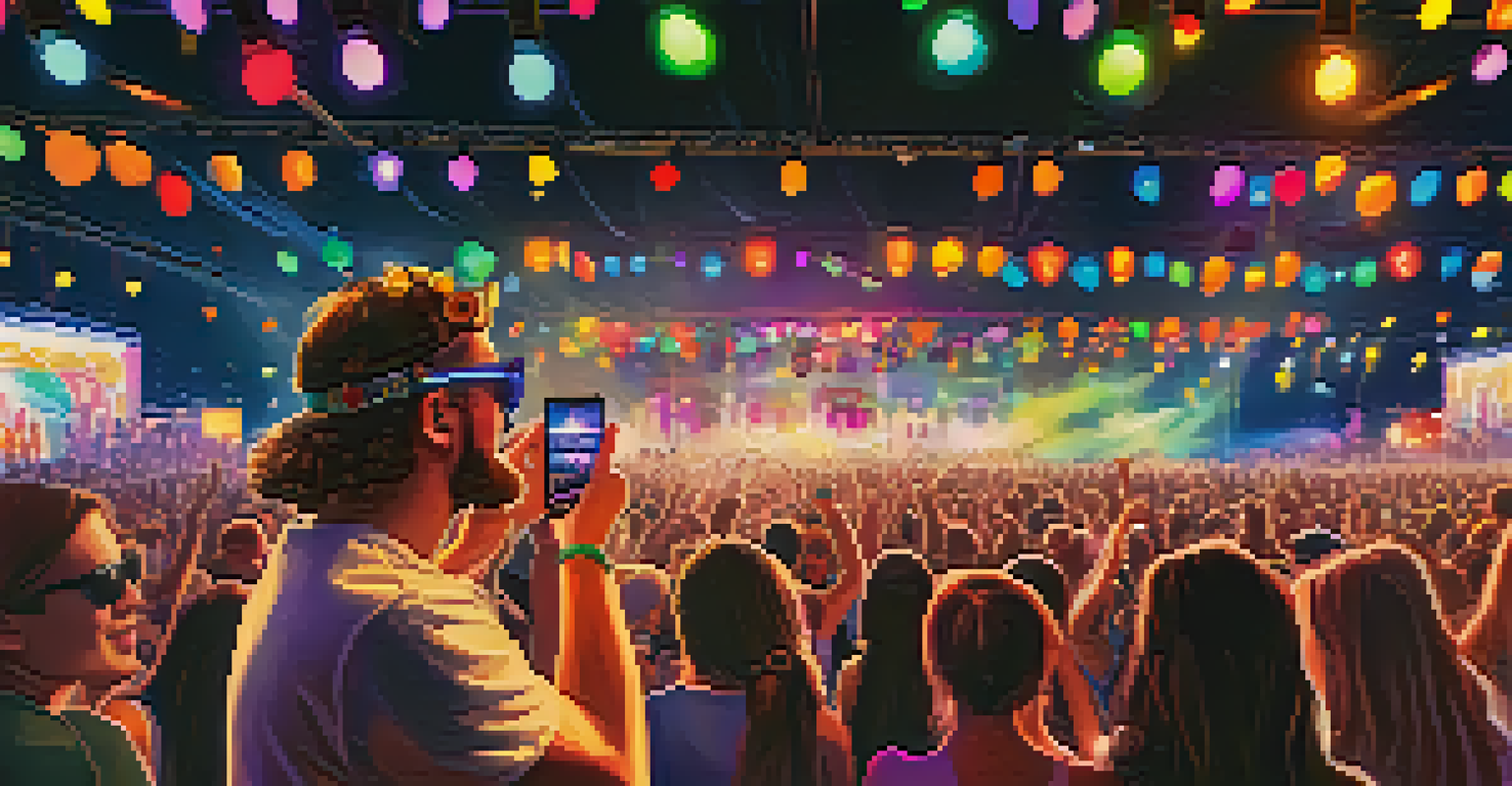The Evolution of Local Music Festivals Over the Years

The Birth of Local Music Festivals in the 1960s
Local music festivals began gaining traction in the 1960s, a time when counterculture movements flourished. Events like the Monterey Pop Festival showcased not just music, but also a sense of community and social change. These early festivals were often grassroots efforts, organized by passionate locals who wanted to highlight regional talent.
Music can change the world because it can change people.
The atmosphere was electric, with an emphasis on free-spirited expression that resonated with the youth of the time. Attendees were not just spectators; they were part of a larger movement that celebrated music as a form of unity. This laid the groundwork for future festivals, blending music with cultural and political messages.
As these events grew in popularity, the concept of the music festival began to spread beyond the small, local gatherings. It set the stage for what would become a booming industry, where local festivals could attract national attention and larger audiences.
The Rise of Popularity in the 1970s and 1980s
The 1970s and 1980s marked a significant turning point for local music festivals, as they began to attract bigger-name artists and larger crowds. Festivals like Woodstock ’69 had already set a precedent, and organizers sought to replicate that success on a smaller scale. Local events started to feature a mix of local talent and well-known acts, creating a more diverse lineup.

During this time, music festivals became an essential part of summer culture, offering a chance for people to escape the ordinary. The rise of rock and pop music brought in new audiences, and festival attendance surged. This era also saw the introduction of sponsorships, which helped fund these events, allowing for better production values and amenities.
Local Festivals Foster Community Spirit
From their inception in the 1960s, local music festivals have emphasized community and social change, creating a sense of unity among attendees.
However, the increase in popularity also brought challenges, such as crowd control and logistical issues. Organizers had to adapt quickly to the growing demands, balancing the need for a carefree atmosphere with the necessity of safety and security.
Innovations and Changes in the 1990s
The 1990s ushered in a wave of innovation for local music festivals, largely driven by advances in technology and media. The rise of the internet allowed for better promotion, enabling festivals to reach wider audiences than ever before. Websites and social media began playing a crucial role in marketing these events, making it easier for fans to stay informed and connected.
Festivals are the ultimate form of participatory art.
This decade also saw the diversification of genres featured at festivals. While rock remained popular, festivals began incorporating hip-hop, electronic, and world music, appealing to a broader audience. This diversification not only enriched the festival experience but also fostered a sense of inclusivity among attendees.
Moreover, the 90s marked the beginning of the 'festival season' culture, where multiple events occurred throughout the spring and summer. This created a new economy around music festivals, leading to partnerships with local businesses and tourism boards, driving even more local engagement.
The Explosion of Festivals in the 2000s
The 2000s witnessed an explosion of local music festivals across the globe, with thousands popping up in cities and towns. Major festivals like Coachella and Bonnaroo set high standards, inspiring smaller festivals to elevate their offerings. The increase in festivals not only provided more options for music lovers but also boosted local economies significantly.
As festival culture grew, so did the emphasis on unique experiences. Organizers began to focus on creating immersive environments, often themed around art, food, and culture. This led to a more holistic experience where attendees could enjoy not just music, but also local cuisine and art installations, creating lasting memories.
Technology Transforms Festival Experience
The rise of social media and live streaming has redefined how festivals engage with audiences, allowing for real-time sharing and broader participation.
However, this boom also led to oversaturation in some markets. As smaller festivals struggled to compete with larger, more established events, many had to innovate or risk being left behind, pushing the boundaries of what a local music festival could be.
The Influence of Social Media and Technology
Social media has fundamentally transformed the way local music festivals operate and engage with their audiences. Platforms like Instagram and TikTok allow festivals to showcase real-time experiences, drawing in attendees who want to be part of the action. This has created a culture where FOMO (fear of missing out) drives ticket sales and social buzz.
Additionally, technology has enhanced the festival experience with mobile apps that provide schedules, maps, and real-time updates. Attendees can easily navigate the festival, discover new artists, and share their experiences instantly. This tech-savvy environment has reshaped how festivals are marketed and experienced.
Moreover, live streaming has become a game-changer, allowing those who can't attend in person to participate virtually. This inclusivity broadens the reach of local festivals and creates a global audience, reinforcing the idea that music can connect people, no matter where they are.
Sustainability and Community Focus in Recent Years
In recent years, the conversation around sustainability has gained traction within the local music festival scene. Organizers are increasingly aware of their environmental impact and are implementing eco-friendly practices, like waste reduction and carbon offset initiatives. This shift reflects a broader societal concern for the planet, resonating with environmentally conscious attendees.
Moreover, many festivals are placing a greater emphasis on community involvement. Local artists, vendors, and businesses are being prioritized, creating a sense of ownership and pride within the community. This approach not only supports the local economy but also strengthens the connection between the festival and its attendees.
Sustainability Shapes Modern Festivals
Recent years have seen local music festivals increasingly focus on eco-friendly practices and community involvement, reflecting a commitment to social change.
As a result, local music festivals are evolving into platforms for social change, incorporating themes of inclusivity, diversity, and environmental responsibility. This transformation is not only about the music; it's about creating a positive impact and fostering a sense of belonging among participants.
The Future of Local Music Festivals
Looking ahead, the future of local music festivals appears bright yet challenging. As trends like hybrid events and immersive experiences gain popularity, organizers will need to adapt to new expectations from audiences. The ability to blend physical and virtual experiences could redefine participation in festivals, making them more accessible to everyone.
Additionally, the importance of safety and health protocols will likely remain a priority in the post-pandemic landscape. Festivals may implement more stringent measures to ensure the well-being of attendees, which could reshape the festival experience for years to come. This focus on safety might also lead to innovations in crowd management and event logistics.

Ultimately, local music festivals will continue to evolve, driven by changing technologies, societal values, and audience expectations. The core essence of bringing people together through music, however, will remain unchanged, reinforcing the belief that music is a universal language capable of uniting diverse communities.